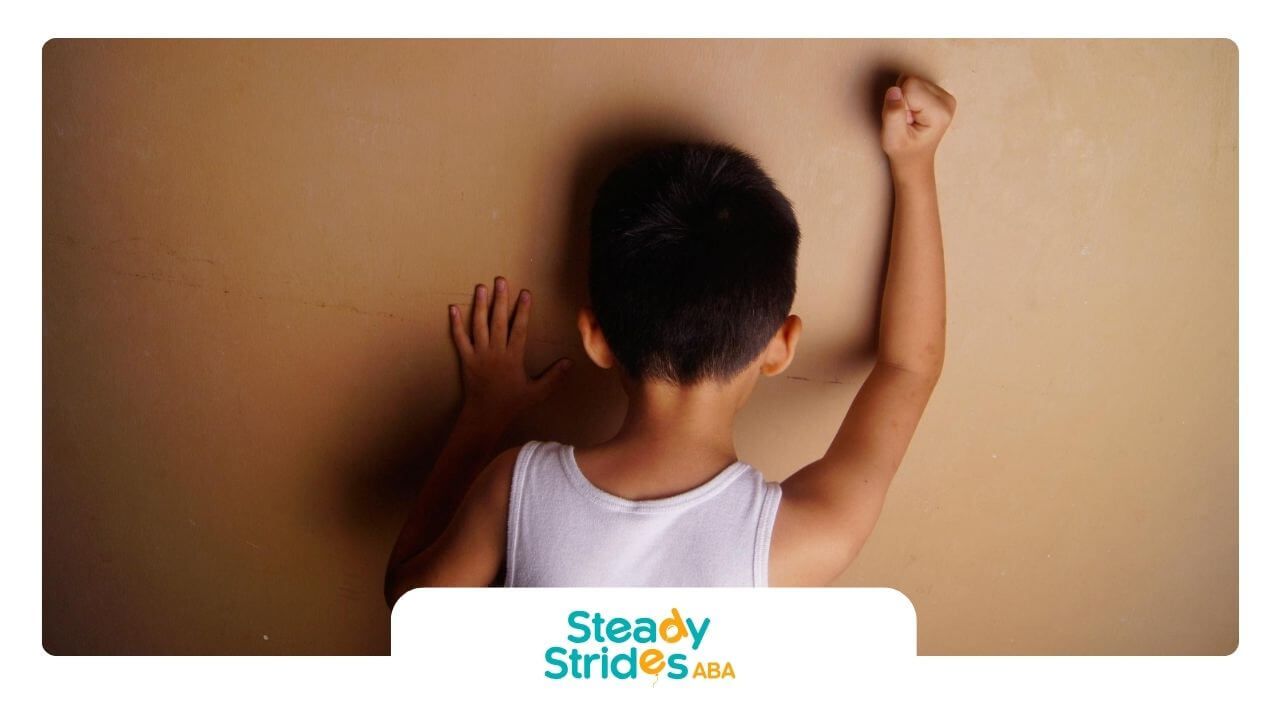Key Highlights
- Dive into the distinctions between autistic elopement in adults and children, focusing on their differing needs.
- Uncover frequent causes like sensory overload, anxiety, and communication difficulties that trigger elopement.
- Examine the unique risks and challenges that elopement poses to each age group.
- Gain insights into prevention methods such as visual schedules, GPS trackers, and structured environments.
- Learn how caregivers and community members can collaborate to foster a secure space for autistic individuals.
- Access crucial answers to your questions about managing elopement behaviors effectively and safely.
Elopement — the act of leaving a safe space without notice — is a serious concern for individuals on the autism spectrum. While most people associate this behavior with children, autistic adults also experience elopement, often for very different reasons.
As an ABA therapist, I once worked with a 28-year-old client who regularly left his workplace without informing anyone. His reason? The fluorescent lights were too harsh, and he didn’t have a way to explain his discomfort. That experience opened my eyes to how overlooked adult elopement is in both clinical and everyday settings.
In this blog, we’ll explore why autistic elopement occurs in adults and children, how the risks differ by age, and practical ways families and caregivers can respond. You'll also find examples, prevention tips, and guidance based on behavioral therapy strategies to help build safer, more supportive environments.
What Does Autistic Elopement Look Like in Adults vs. Children?
Understanding the Term
Autistic elopement refers to when someone on the autism spectrum leaves a safe or expected environment without notifying caregivers, support staff, or loved ones. This isn’t a defiant act — it’s often a response to stress, sensory overload, or an unmet need.
Differences by Age Group
While the behavior may appear similar in adults and children, the reasons behind it — and the risks — can be very different.
- Children often elope because they’re overwhelmed by sensory input or unable to express distress.
For example, I worked with a 7-year-old who would run from the playground whenever another child screamed. It wasn’t misbehavior — it was an escape from a sound that caused physical discomfort. - Adults, on the other hand, may elope to seek solitude or avoid complex social settings.
One client of mine, in his 30s, used to leave family gatherings quietly. He wasn’t being antisocial — he just needed time alone to decompress after too much stimulation.
Recognizing these differences helps parents, teachers, and caregivers tailor their safety plans to the individual, not just the diagnosis.
Why This Matters
According to a study published in Pediatrics, nearly half of children with autism attempt to elope at some point, and many do so repeatedly. Adults, while less studied, also face significant risks — but their behavior often gets misunderstood or dismissed.
Understanding the age-specific triggers is the first step toward safer, more compassionate support.
Why Does Autistic Elopement Happen?
Root Causes Across the Spectrum
Autistic elopement doesn’t happen randomly — it’s often the result of overwhelming emotions, sensory overload, or unmet communication needs.
For many, the environment becomes too much. Loud noises, unpredictable changes, or crowded spaces can be deeply distressing. Some individuals leave not because they want to cause concern, but because it’s their way of coping.
In My Practice
I once worked with a teenage boy who would quietly leave school when the fire alarm was tested. No one realized how severely he reacted to that sound until we reviewed his behavior patterns over time.
He wasn’t trying to be defiant — he was escaping something painful and disorienting. Understanding the “why” behind the behavior is critical. Without it, we risk responding with punishment instead of support.
Communication Challenges
Elopement can also happen when someone struggles to express their needs or discomfort. A nonverbal adult might leave a store simply because they can’t ask for a break. In that moment, flight feels like the only option.
Supporting autistic individuals means offering tools that reduce their need to flee in the first place.
Key Triggers
- Sensory Overload: Loud environments, harsh lighting, or strong smells
- Anxiety or Stress: Especially in unfamiliar settings
- Sudden Changes: Disrupted routines or surprises
- Desire for Solitude: A natural need for space
- Lack of Communication Tools: When people can’t ask for help or express distress
Understanding and identifying these triggers early can help prevent future episodes of elopement.
What Are the Risks and Consequences of Elopement?
Safety Concerns for Children
For children on the autism spectrum, elopement can lead to immediate danger. Busy roads, unfamiliar areas, or bodies of water pose serious threats.
I once supported a family whose 6-year-old son ran out of their backyard and was found near a neighborhood pond. He had been overwhelmed by the noise during a family barbecue. Thankfully, they found him quickly — but it was a wake-up call.
Many children who elope haven’t yet developed the safety awareness needed to recognize hazards. They may not understand traffic signals or know how to approach a trusted adult for help.
That’s why proactive safety measures are so essential — not just fences and locks, but also teaching what “safe” and “unsafe” places look like in daily life.
Unique Dangers for Adults
For autistic adults, the dangers aren’t always physical — they’re often social and psychological.
An adult who elopes might end up in an unfamiliar neighborhood, interact with strangers, or be approached by someone with harmful intentions. If that adult is nonverbal or appears confused, the situation can quickly escalate.
Adults may also struggle to ask for help or even communicate who they are. That makes them vulnerable in public, especially if first responders or bystanders misunderstand their behavior.
Emotional Impact on Families
Elopement isn’t just stressful for the person who elopes — it deeply affects their caregivers too.
There’s often guilt, fear, and the ongoing anxiety of “What if it happens again?” Many parents and caregivers say they live in a constant state of alertness, always watching for signs of flight.
Understanding the risks — and how different they are across age groups — helps families prepare with better tools, not just worry.
How Can We Prevent Autistic Elopement?
Building a Safe Environment
Prevention starts with understanding the individual. No two autistic people experience the world the same way. That’s why safety strategies need to be personalized.
Creating structured routines, using clear visual schedules, and designing calm environments can all reduce the likelihood of elopement.
In one home-based ABA program I supported, a visual “first-then” board helped a young adult manage transitions — a time when he was most likely to elope. Once he knew what was coming next, his anxiety dropped significantly.
Proactive Strategies for Children
Children benefit most from consistency. Routines provide predictability, and predictability reduces fear.
- Visual supports like picture schedules help children understand what’s happening next.
- Social stories can teach what to do in overwhelming situations.
- Safety training can include teaching children to recognize danger signs (like traffic) and stay near caregivers.
- Communication tools like AAC devices or sign language empower children to express discomfort before it escalates.
Regular practice, paired with positive reinforcement, makes these tools stick.
Tailored Support for Adults
Adults need autonomy — but they also need supports that acknowledge their sensory and social challenges.
- GPS tracking devices or smartwatches can offer peace of mind for families while respecting independence.
- Quiet zones at work or in public places give adults a place to decompress.
- Clear routines or transition cues can help reduce anxiety-driven elopement.
Just as importantly, adults should be involved in their own safety planning. Ask what makes them feel safe, what triggers them, and what they need in those moments.
Consistent Caregiver Involvement
Families and caregivers play a vital role. Regular communication with the autistic person — even simple check-ins — can catch signs of distress before it leads to elopement.
When caregivers respond with understanding instead of frustration, it builds trust. And trust is what helps people stay, not flee.
At Steady Strides ABA, we believe every individual deserves to feel safe, understood, and supported — whether at home, in school, or out in the world.
If your loved one is struggling with elopement or other challenging behaviors, our experienced team is here to help. We provide ABA therapy in New Mexico and Texas that’s rooted in compassion and guided by evidence.
Reach out today to schedule a consultation and learn how our ABA services can make a lasting difference in your family’s life.
Frequently Asked Questions
How can I tell if my loved one is at risk for elopement?
Some signs that your loved one may be at risk for elopement are if they often wander, feel more anxious in places they do not know, or really want to be on their own. If you see changes in the way they act or talk, this can also help you spot potential risks linked to elopement.
What should I do immediately if an autistic person elopes?
If an autistic person goes missing, it is important to stay calm. Start searching areas close by at once. Tell local authorities if you have to. When you find the autistic person, talk in a calm way. Have a safe space ready for them when they come back. This can help them calm down after what happened.
Are prevention strategies different for adults versus children?
Yes, the way to stop elopement in children and adults is not the same. This is because kids and grown-ups are at different points in life and have different needs. Children can do well with clear rules, set routines, and being watched by an adult. But for adults, it's better to make a plan that fits them as a person. This plan should look at what things make them want to leave and ways they can deal with it. This will help stop elopement in the best way for each group.
Sources:
- https://www.marcus.org/autism-resources/autism-tips-and-resources/what-to-do-when-your-child-elopes
- https://health.clevelandclinic.org/autism-elopement
- https://pmc.ncbi.nlm.nih.gov/articles/PMC4524545/
- https://www.autismparentingmagazine.com/autism-elopement/
- https://www.healthline.com/health/autism/elopement-in-autism













